This summer will be our family’s third attempt at having a vegetable garden. Each year we seem to make huge strides forward but last year we seem to have met our final match with the back yard squirrel population. When we first moved to Colorado can you believe we thought the buggers were cute? Looking out the back window and seeing 8-10 of them at once running around and having a great time has gone from entertaining to heart breaking. They eat EVERYTHING in the garden, generally digging it up or taking it off the vine before it is ripe enough for human consumption. If you have a squirrel problem you know what I’m talking about.
So, this year we decided to build garden boxes and fully enclose them with chicken wire (technical term is Poultry Netting) to ensure the squirrels can’t access our food. There are some other distinct advantages of garden boxes.
-Less water wasted. Since you are grouping all the plants together in a box you only have to water within the box. No more large waste of water.
-Better soil control. Since soil is critical in our area its much easier to control good soil within the fixed space of a box than it is to till up half the back yard and mix in some good stuff.
The dimensions of my box are 8 feet by 8 feet square and 12 inches deep. Within the box there is a 20 inch “aisle” in the middle from which one would manage the garden, creating two distinct 3×8′ boxes on either side of the box. Each corner is supported by a 4×4 which stands 6 1/2 feet tall.
We assembled the box on the patio and then (with the help of 3 others) carried it into place. Because we put our box on a hill we had previously dug out a level space. Once in place we added a mixture of compost and top soil. We found good compost by searching on Craigslist. There were 3 local horse boarding places in our town that offered free compost (code for horse manure, hay, and sawdust). Together with a few friends we got a few truck loads and took turns unloading into our backyards.
We purchased the top soil by the yard from a local place that sells landscaping supplies. $18 a yard and a yard is a lot of dirt.
With the dirt in place we put in the top framing from post to post to create a square frame around the top of the box. Cut each board at a 45 degree angle to make them come together at each corner.
I built the door in the garage and covered it in chicken wire first. Then we wrapped the whole box in chicken wire. Then we installed the door. We used a staple gun to secure the wire to the wood. Worked really well and make the project move a lot faster.
The chicken wire came 4 feet by 50 feet. So, inevitably you are going to have some seams. Someone more handy and dedicated than I would have bought more wood and ran it across the middle all the way around and a few additional pieces across the top. This would have created a natural place for the seam for the chicken wire in addition to adding more stability. Sadly, it would have meant more time and more money for the project and I didn’t feel like adding either. So instead we used the wire of the chicken wire to wrap it every 5 to 6 inches to seal the seams between sections of wire.
Here is the finished product. This year if the squirrels get my food I’m throwing in the towel and hoping the produce section of the store is always there for me!
The red fence you see in the background surrounds our beehive and you can learn more about that project here.

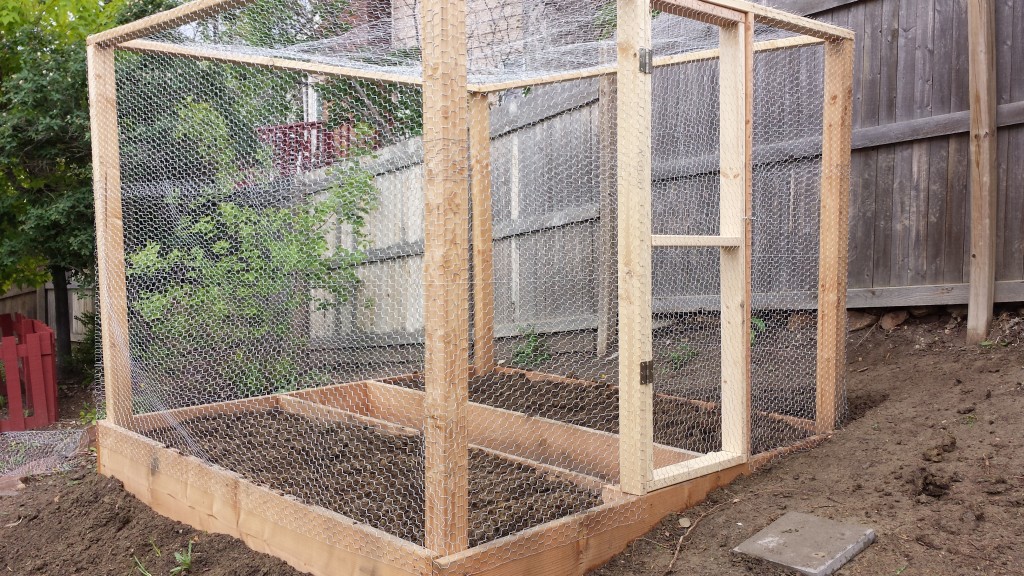
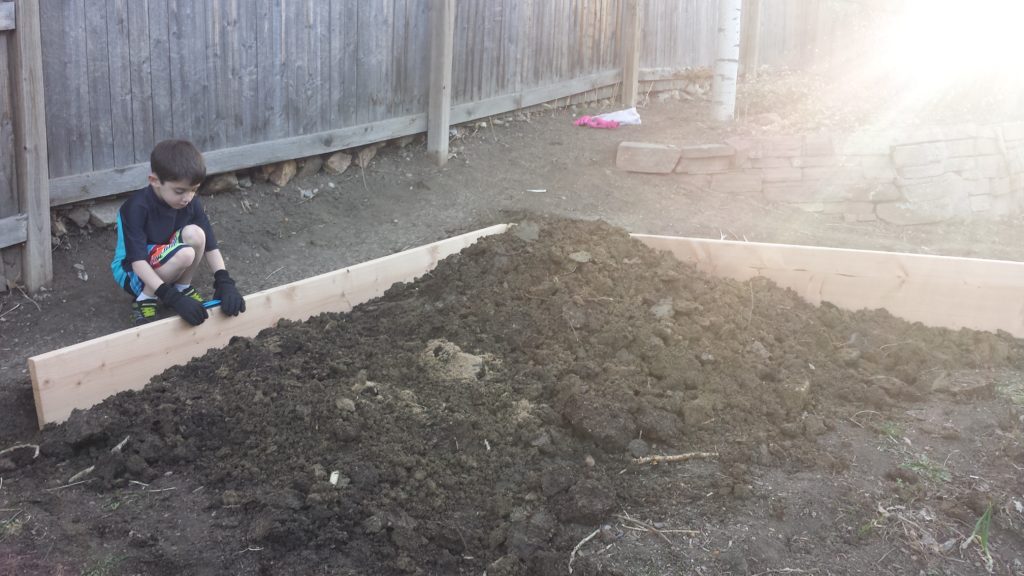
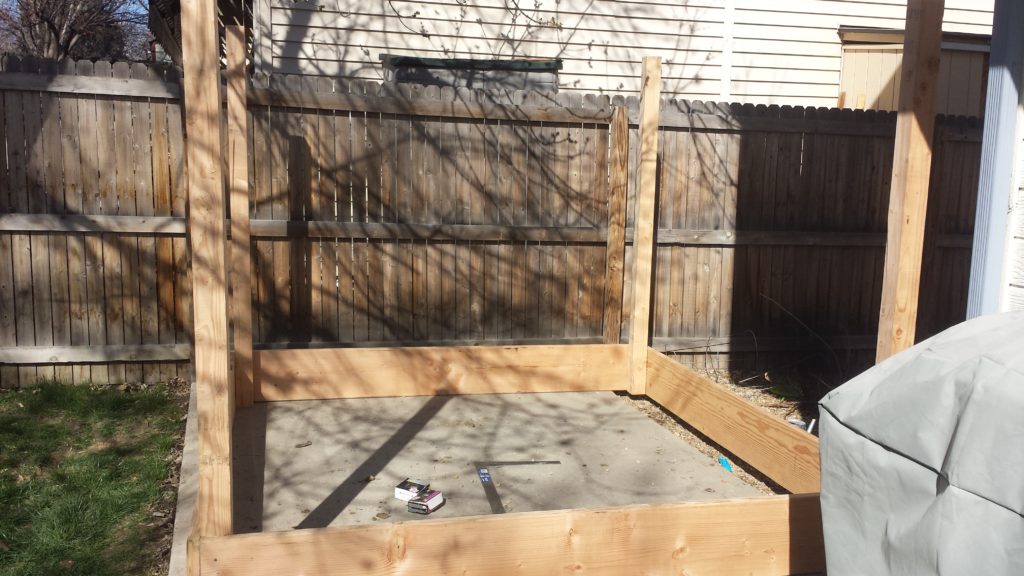
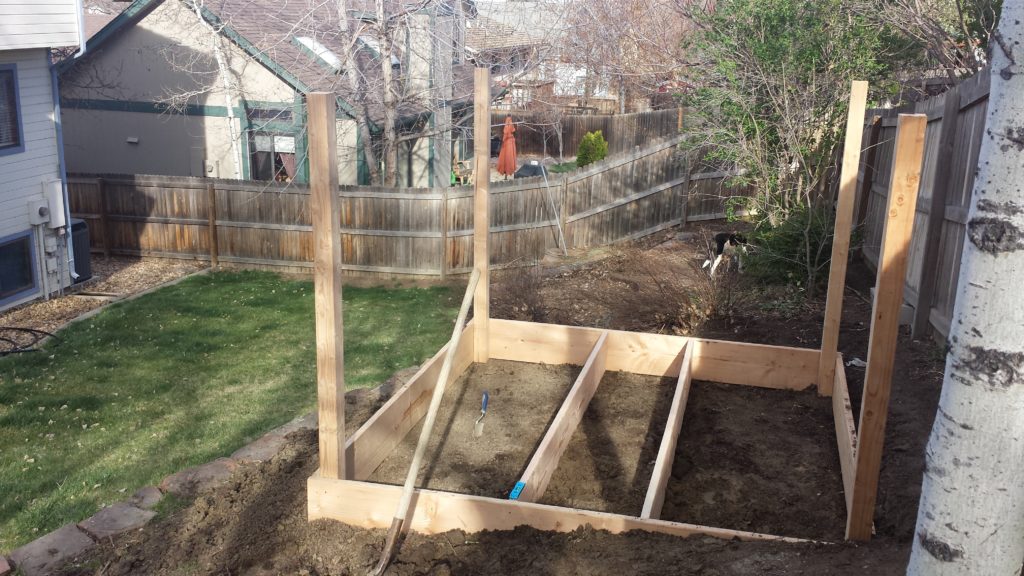
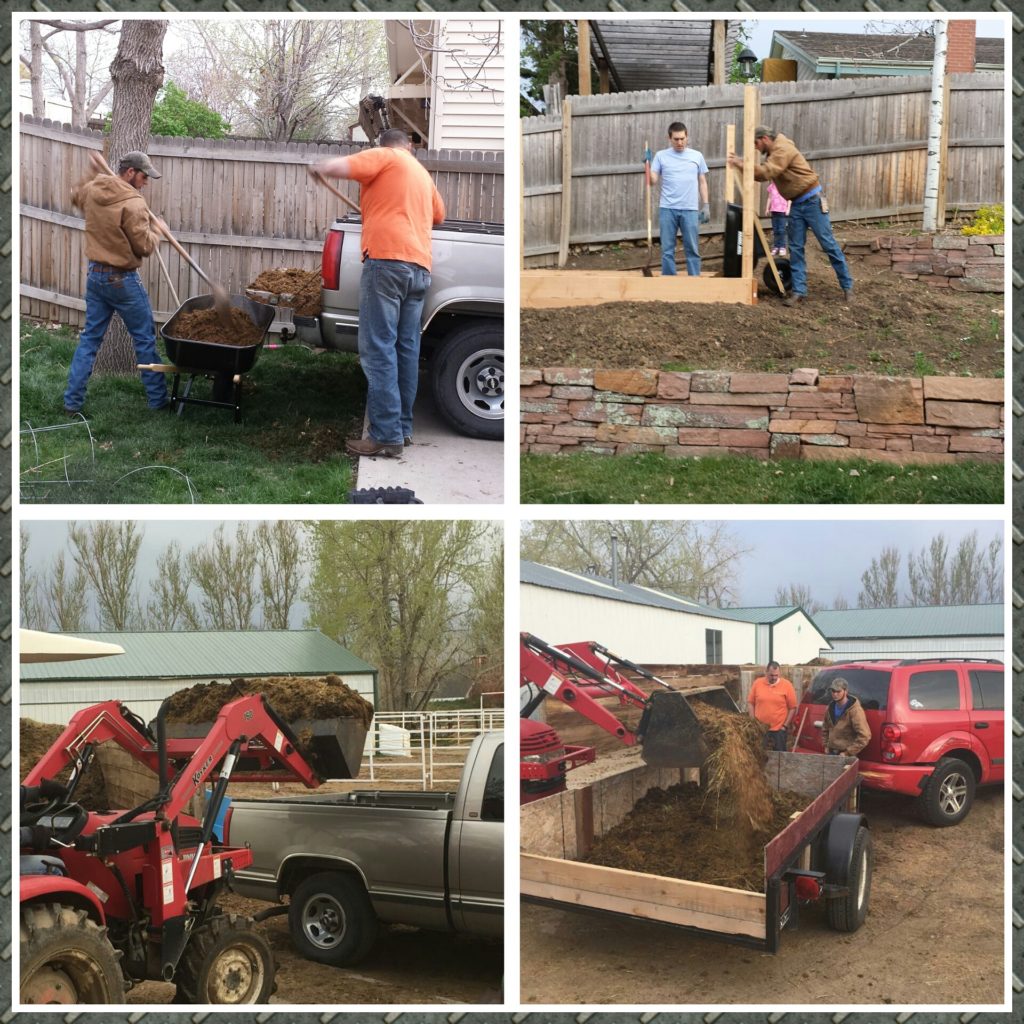
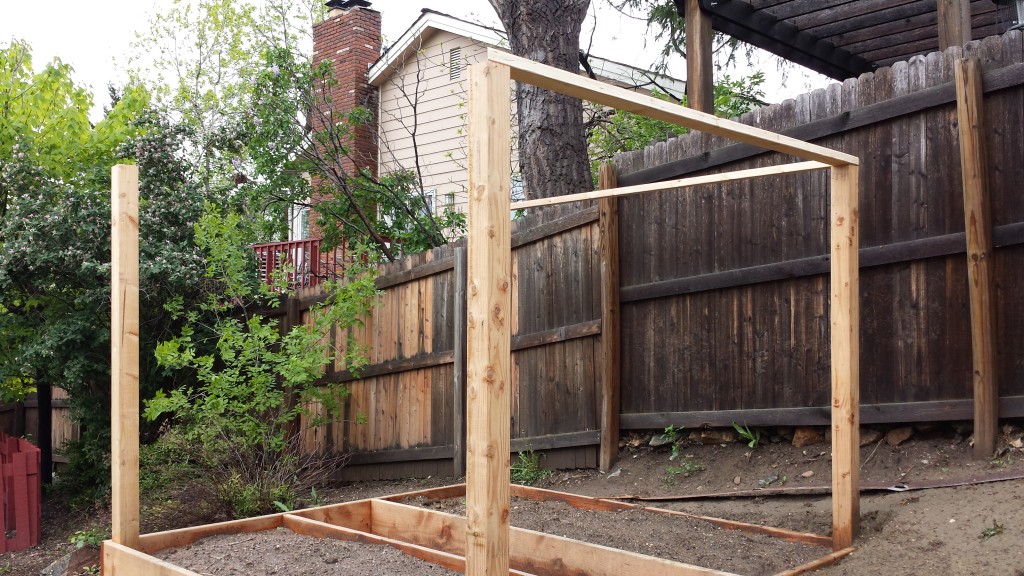
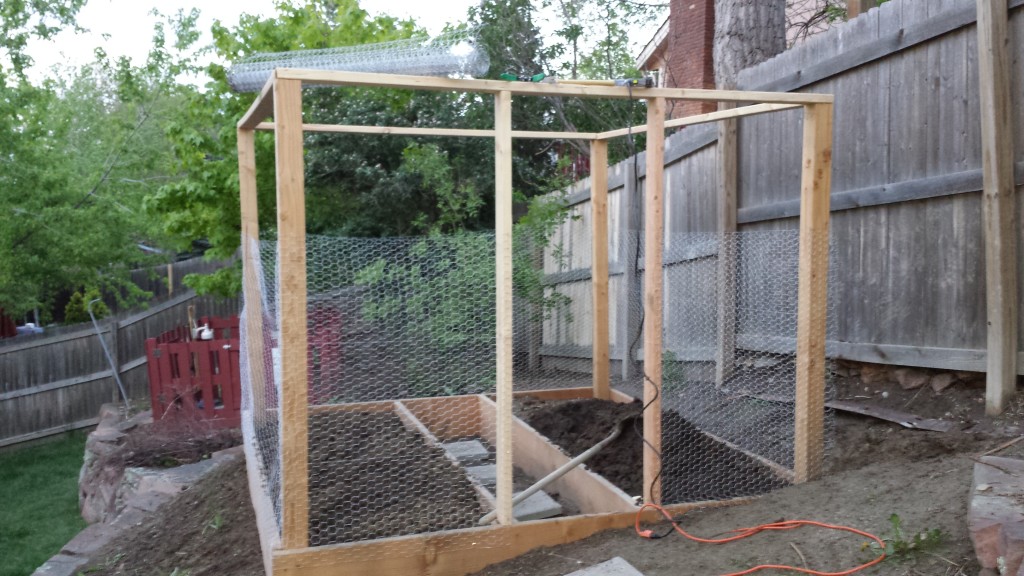
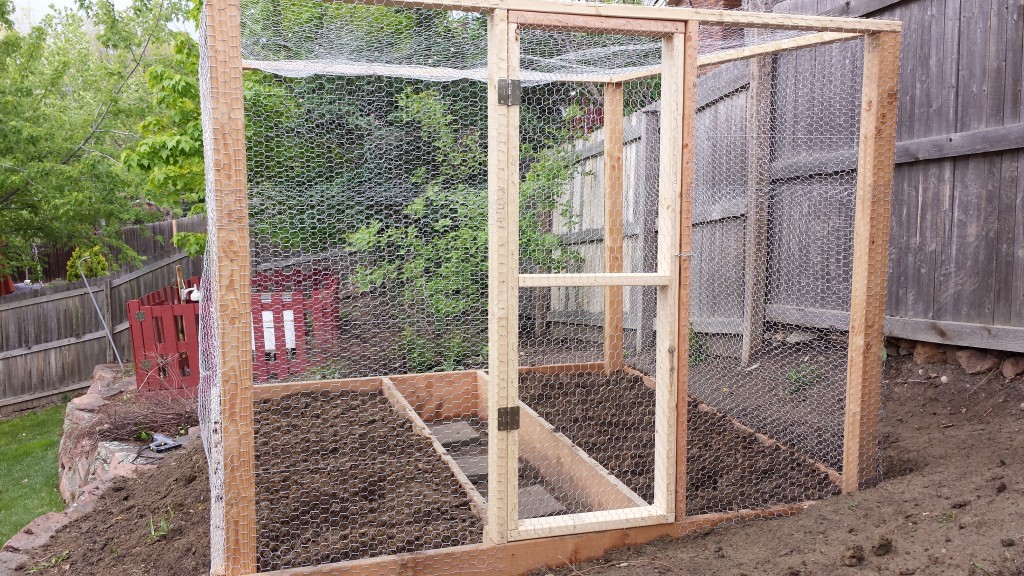
I’m not sure how old this article is.. how did it turn out? Do you have a breakdown on about how much it cost you in supplies/time? It looks great!
It worked perfectly. Squirrels couldn’t get in. They steal tomatoes through the wires sometimes but that is about it. Not sure how much it cost is supplies. The most time consuming part was leveling the patch of ground where I put it. Outside of that the actual construction of the wood frame was probably about an hour, but requires 2 people. Stapling on the poultry wire was probably another 30 minutes to an hour and also requires two people.
I have beds already – a raised bed on legs that I had on my deck, which i’m going to include in the cage because the squirrels ate everything, and a regular raised bed made from recycled plastic which will last forever. I’m wondering what you would recommend I use for the wood around the base of the cage, since it will not be part of the actual raised gardens. Would 2x4s be too flimsy? Thanks! I can’t wait to get this built!